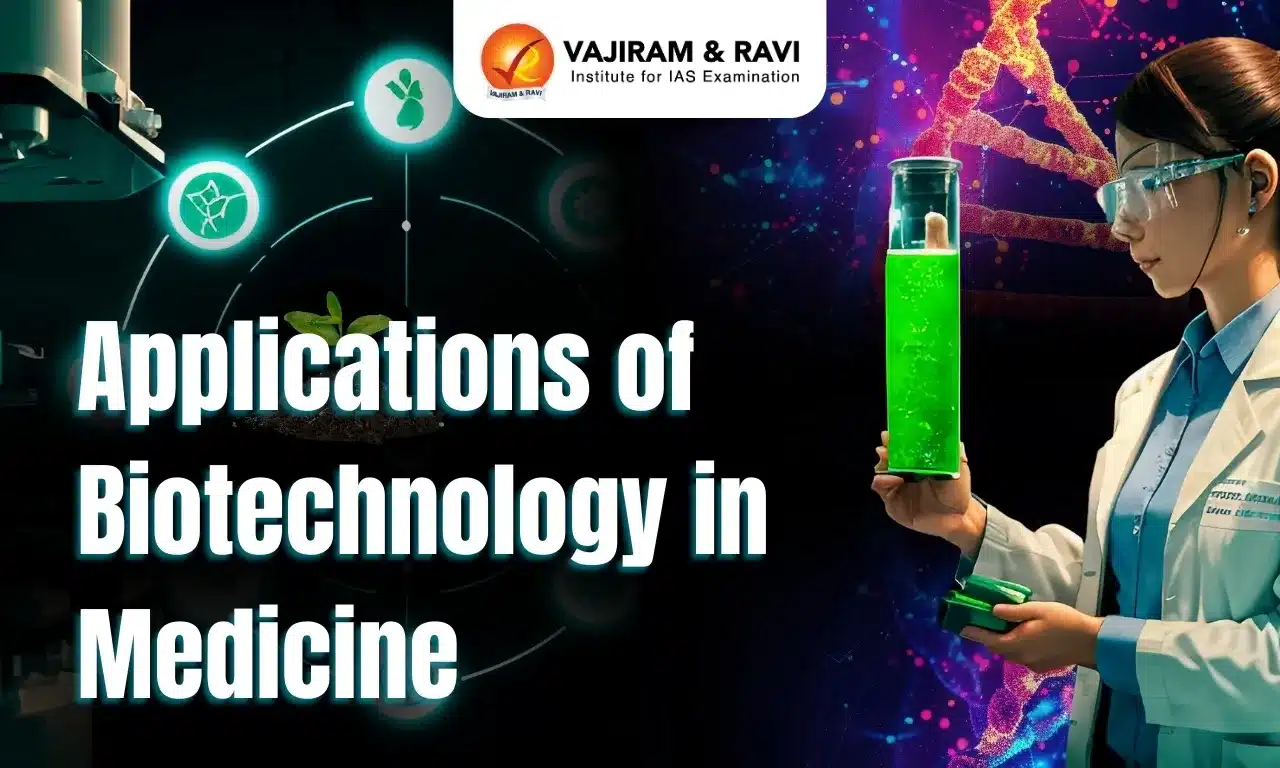Bacteria are microscopic single-celled prokaryotic organisms that play a crucial role in the ecosystem and have a significant impact on human health. Bacteria can be found all over the world, including the top of the mountains or the deeper trenches in the oceans. They are also present in our bodies like in the mouth, skin, digestive system, reproductive system and urinary tract. Bacteria can be both harmful and useful for humans.
Structure and Morphology of Bacteria
Being prokaryotic organisms, bacteria do not possess a true nucleus. They also do not have membrane-bound organelles like mitochondria. The following is the basic structure of a bacterium:

- Capsule: This thick protective gelatinous layer around some bacterial cells is related to the virulence of bacteria.
- Example: Capsule formation in Diplococcus pneumoniae.
- Cell Wall: This rigid outer layer provides shape and protection to the cells.
- The Gram-positive bacteria have a thick layer of Peptidoglycan, while Gram-negative bacteria have a thinner layer along with an outer membrane.
- Cytoplasmic Membrane: This inner layer surrounds the cytoplasm and controls the flow of molecules in and out of the cell. It also houses various cellular processes.
- Cytoplasm: This semi-fluid substance contains various cellular structures.
- Almost all the cellular processes of bacteria occur in the cytoplasm.
- Nucleoid: Instead of a nucleus, bacteria have a nucleoid.
- It is an area where the genetic material (DNA) remains.
- Ribosomes: These are the tiny granules present in the cytoplasm and are the centres of protein synthesis.
- Vacuoles: These are fluid-containing cavities present within the cytoplasm.
- Glycogen and Volutin Granules: These are stored food granules present within the cytoplasm.
- Flagella and Pili: These are external appendages that aid in movement and adhesion, respectively.
- Flagella are long, whip-like structures, while pili are shorter, hair-like projections.
- Endospores: Some Gram-positive bacteria like Anaerobacter, Bacillus, Clostridium, Heliobacterium, etc. can form dormant (without detectable metabolism) structures within the cytoplasm, known as endospores.
- They can survive extreme chemical and physical stress.
- They can cause diseases like anthrax by Bacillus anthracis and tetanus by Clostridium tetani.
- Biofilms: Bacteria often form dense aggregations on a surface, called biofilms.
- The larger formations of biofilms are called microbial mats.
Classification of Bacteria
The bacteria are classified by scientists on different bases.
| Basis | Types of Bacteria |
|
Bacterial shapes (Morphological) |
- Spheres or ball-shaped, for example, Micrococci, Neisseria. - Rod-shaped bacteria, for example, Microbacilli, Diplobacilli, etc. - Spirals or helixes, for example, Vibrio, Spirochaetes, etc.  |
| Using oxygen |
- Aerobic Bacteria: are bacteria that need oxygen to live and grow.
- Anaerobic Bacteria: are bacteria that can’t live or grow when oxygen is around.
- Facultative Bacteria: Bacteria that can live and grow with or without oxygen.
|
| Cell Wall |
- Bacteria with thick cell walls can be stained by applying special chemicals (stains). One common staining process is Gram staining (using crystal violet or methylene blue as primary colour).
 |
Nutrition of Bacteria
Bacteria need the minimum nutritional requirements, like water, a source of carbon, a source of nitrogen, and some inorganic salts, to grow.
- Photoautotrophs: Bacteria that perform photosynthesis are called photoautotrophs.
- Examples: Cyanobacteria, Green sulphur bacteria, Purple bacteria
- Chemoautotrophs: Bacteria that obtain energy from chemical reactions are called chemoautotrophs.
- Examples: Thermodesulfobacteriota, Enterobacteriaceae, etc.
- Heterotrophs: Some bacteria are unable to synthesise their own metabolites. They depend on the organic compounds in the media or from their hosts. They are called heterotrophs.
- Some bacteria can require only one nutrient - glucose, while others may also need other compounds such as amino acids, coenzymes, lipids, carbohydrates, and nucleotides.
- Some can grow without the need of an external nitrogen source, called Nitrogen-fixing bacteria.
Reproduction of Bacteria
The reproduction in bacteria occurs asexually, majorly through Transverse Binary Fission which occurs under favourable conditions.
- Binary fission: In this process, the parent cell elongates, the cell wall invaginates, and the transverse wall is formed, which separates the parent cell into two daughter cells.
- Each daughter cell repeats the process. Thus, after almost every twenty minutes, a bacterial cell divides by transverse fission into two.
- Sometimes bacterial populations produce substances such as alcohol or acids that are toxic to them and cause a decrease in the rate of reproduction, thereby causing a steady population.
- Other modes: Bacteria, apart from the vegetative (binary fission, budding, or fragmentation) mode, reproduce through genetic recombination (transformation, transduction, and conjugation).
Importance of Bacteria
Bacteria have several benefits and applications in diverse fields. Some of the applications and uses of bacteria are:
- Symbiotic bacteria:
- Nitrogen fixation: In some plants (legumes), bacteria residing in the rhizosphere (are in soil around roots) exhibit nitrogen fixation. Examples are Azotobacter, cyanobacteria (Anabaena and Nostoc), Azospirillum, Rhizobium, etc.
- Increases gut immunity: Some bacteria reside in the human gut, contributing to gut immunity synthesising essential vitamins (folic acid, biotin, vitamin K, etc.). These bacteria are consequently known as probiotics.
- Industrial applications:
- Food Industry: Bacteria (such as Lactobacillus) are essential in the fermentation process for producing various foods and beverages, including bread, cheese, sauerkraut, kimchi, pickles, and certain types of sausage.
- Textile Industry: Bacteria-derived enzymes are used in the textile industry for processes like desizing, scouring, and bleaching of fabrics.
- Paper and Pulp Industry: Bacteria are used in the pulp and paper industry for bio-bleaching, reducing the environmental impact compared to traditional chemical methods.
- Cosmetics: Bacteria are involved in the fermentation of certain ingredients used in cosmetics, such as hyaluronic acid and peptides.
- Agriculture and allied activities:
- Bacteria are used in the production of GM crops such as Bt cotton, in which the gene is taken from Bacillus thuringiensis.
- Certain bacteria, such as Actinobacteria, Azotobacter, Rhodospirillum, and Cyanobacteria, are used as biofertilizers.
- Some bacteria, such as Bacillus thuringiensis, are used as biopesticides.
- Photosynthetic bacteria such as Cyanobacteria obtain energy through photosynthesis by using photosynthetic pigments, like carotenoids, phycobilins, and different forms of chlorophyll, which absorb energy from light.
- In aquaculture, bacteria are used as probiotics to improve the gut health of fish and enhance overall growth.
- Bioremediation: Bacteria are used to clean up pollutants in soil and water. They can break down contaminants like oil, pesticides, and heavy metals, contributing to environmental restoration.
- Bacteria are employed in wastewater treatment plants to break down organic matter. This process helps purify water before it is released back into the environment.
- In health:
- Bacteria like Escherichia coli (E. coli) and many others are modified for the production of recombinant proteins, insulin, antibiotics, and other biopharmaceuticals.
- Bacteria are engineered to produce antigens for vaccines, contributing to the development of Recombinant Vaccines that are safer and more effective than others.
- Biofuels: Bacteria, especially strains of the genus Zymomonas and Saccharomyces, are used in the fermentation of sugars to produce bioethanol, a renewable fuel.
- Genetic Engineering Research: Bacteria are fundamental tools in molecular biology research.
- They are used for cloning, plasmid propagation (for example, Ti plasmid from Agrobacterium tumefaciens), and as hosts for the production of proteins.
- Many Restriction endonuclease and gene editing tools (including CRISPR-Cas9) have been availed from bacteria.
- Polymerase Chain Reaction (PCR):Taq polymerase, used in the PCR, has been obtained from Thermus aquaticus.
- Plastic-Eating Bacteria: Ideonella sakaiensis has been discovered in Japan as a plastic-eating bacteria.
- This bacterium eats a type of plastic called polyethylene terephthalate (PET) from Plastic bottles.
- It generates digestive enzymes capable of breaking PET.
- Scientists are optimistic that this bacteria can play a crucial role in addressing the global plastic pollution issue.

Harmful Effects of Bacteria
There are several harmful effects of bacteria, such as:
- Diseases: Certain bacteria are pathogenic and can cause disease. They can reproduce quickly in our body and give off poisons (toxins) that can cause infection.
- Streptococcus bacteria cause strep throat and Staphylococcus causes staph infections.
- Other bacterial diseases are Tuberculosis (TB), Pertussis (whooping cough), etc.
- Food poisoning: Bacterial toxins present in food can cause food poisoning. This can lead to nausea, vomiting, abdominal discomfort, diarrhoeaand even death.
- Examples are Staphylococcus aureus, Clostridium botulinum, Salmonella enteritis, etc.
- Spoilage and Wastage of food: Souring of milk, rotting of vegetables and meat are caused by many saprotrophic bacteria.
- For example, E. coli, Spirochaeta, etc.
- Reduction of Soil Fertility: The denitrifying bacteria like Thiobacillus denitrificans, Micrococcus denitrificans, Pseudomonas aeroginosa convert soil nitrates and ammonia into free nitrogen and thus reduce soil fertility.
- Bioterrorism: The improved variety of infective agents like bacteria or viruses as bioweapons can lead to bioterrorism.
- Anthrax and plague have been used in multiple wars, including the Second World War.
- Antibiotic-Resistant Bacteria: Antibiotic-resistant bacteria are those bacteria that are able to multiply and survive in the presence of an antibiotic.
- Some bacteria are naturally resistant to some antibiotics. For example, Benzyl Penicillin has very little effect on most organisms found in the human digestive system (gut).
- A few have developed resistance to antibiotics that were once commonly used to treat them. For example, Staphylococcus aureus (‘golden staph’ or MRSA) and Neisseria gonorrhoea (the cause of gonorrhoea) are now almost always resistant to Benzyl Penicillin.
- The major concern regarding antibiotic resistance lies in the fact that certain bacteria have developed resistance to nearly all readily accessible antibiotics. These bacteria have the capacity to induce severe illnesses, posing a significant challenge to public health. For example:
- methicillin-resistant Staphylococcus aureus (MRSA)
- vancomycin-resistant Enterococcus (VRE)
- multi-drug-resistant Mycobacterium tuberculosis (MDR-TB)
- carbapenem-resistant Enterobacteriaceae (CRE) gut bacteria.
Last updated on January, 2026
→ Check out the latest UPSC Syllabus 2026 here.
→ Join Vajiram & Ravi’s Interview Guidance Programme for expert help to crack your final UPSC stage.
→ UPSC Mains Result 2025 is now out.
→ UPSC Notification 2026 is scheduled to be released on January 14, 2026.
→ UPSC Calendar 2026 has been released.
→ UPSC Prelims 2026 will be conducted on 24th May, 2026 & UPSC Mains 2026 will be conducted on 21st August 2026.
→ The UPSC Selection Process is of 3 stages-Prelims, Mains and Interview.
→ Prepare effectively with Vajiram & Ravi’s UPSC Prelims Test Series 2026 featuring full-length mock tests, detailed solutions, and performance analysis.
→ Enroll in Vajiram & Ravi’s UPSC Mains Test Series 2026 for structured answer writing practice, expert evaluation, and exam-oriented feedback.
→ Join Vajiram & Ravi’s Best UPSC Mentorship Program for personalized guidance, strategy planning, and one-to-one support from experienced mentors.
→ UPSC Result 2024 is released with latest UPSC Marksheet 2024. Check Now!
→ UPSC Toppers List 2024 is released now. Shakti Dubey is UPSC AIR 1 2024 Topper.
→ Also check Best UPSC Coaching in India
FAQs related to Bacteria
Q1. What is the definition of bacteria?+
Q2. What are the 4 types of bacteria?+
Q3. How are bacteria used?+
Q4. What is the role of bacteria in the environment?+
Q5. What is antibiotic resistance?+

















